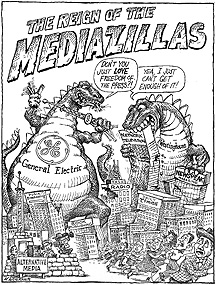
Radio Waves at KCMU
The momentum in the battle to bring back the KCMU News Hour seems to have shifted to the side of News Hour supporters.On August 15, speakers including respected civil-rights attorney Len Schroeter and author Paul Loeb blasted the decision to yank the News Hour during an impassioned presentation before the KUOW Advisory Board. Schroeter warned that UW officials may find themselves in another First Amendment nightmare similar to the C.U.R.S.E. flap of 1993, declaring that pulling the News Hour "had the effect of suppressing free speech." He hinted that a lawsuit against the school, which owns and operates KCMU, may be in the offing.
The KUOW Advisory Board, which technically has jurisdiction over KCMU because the stations merged last year, was not consulted before General Manager Wayne Roth pulled the News Hour in June. "I find all of this very troubling," Board member Larry Fehr said. Some board members complained that they learned about the decision in local newspapers. Roth's boss, University Relations Vice President Bob Edie, fidgeted uncomfortably during the meeting.
The board made no decision but promised to continue to look into the matter. Meanwhile, Community Powered Radio, the group advocating on behalf of the News Hour, continues to hold strategy meetings every Thursday at 7:30 p.m. at the Black Cat Cafe, 4110 Roosevelt Way NE. For information on the effort, call 782-8292.
For more information on the KCMU situation, please see last issue's article "Curses Again".
New Ink
Aorta is Reflex reborn. After a nine-year run, Reflex gave up covering the Northwest arts scene in March, a victim of cutbacks in art funding, and apathy amongst board members and well-heeled arts patrons. But editor and publisher Jim Demetre hopes to keep Northwest art crit alive with reviews and essays on the role of art in society. Aorta is off to a promising, if uneven, start. Best is Cydney Gillis' sly and cynical look at the Seattle Art Museum's "studio tour" in May, wherein rich art mavens deigned to rub shoulders with real, live (and poor) artists. The $35,000 raked in went towards an exhibit of Japanese textiles owned by Virginia and Bagley Wright, "millionaires who were gracious enough to build an entire museum so that poor artists could foot the bill." Gillis noted how the tour guides shunned the studios of abstract painters in favor of decorative products and home furnishings. But David Berger could have beefed up his piece which argues for saving the Elwa Dam as a historical and architectural landmark. Sure, dams are art, the Elwa was built in 1913... but go tell it to the fish.
Dead Ink
Once again, it is our somber duty to report that a number of publications have moved on to the great print run in the sky.Locally, Frank Haulgren, who put out the Bellingham-based Radio Resisters Bulletin, decided to call it quits in June, citing limited time and resources. Haulgren put out 14 issues of the bulletin, which covered community radio and its struggle to maintain independence in the face of Federal Communications Commission restrictions and the increasingly corporate tilt of the Public Broadcasting System. Of particular interest were reports in the Bulletin about the politics of radio, from Pacifica Radio's recent drift towards the mainstream to the phenomenon of "micro radio," which broadcasts on a clandestine basis without an FCC-approved license or frequency. Good work, Frank! Back issues are available via e-mail, write: haulgren@well.com.
Moving down the coast to the Bay Area, News For A People's World published its final issue early this summer. Founded by veteran progs, this new effort managed to blend progressive politics, multicultural issues and social commentary in a professional and well-packaged paper. The fourth and last issue in June featured a particularly incisive piece by Conn Hallinan about skull-duggery at Lawrence Livermore National Laboratory, where sick scientists continue to invent new ways to finish off the planet despite an ostensible end to the arms race. (Several of us at the Free Press cut our baby hack teeth with Hallinan, who teaches journalism at UC Santa Cruz.)
Lastly, and also from San Francisco, comes confirmation of what some of us suspected - Processed World is no more. This slick mag with lots of graphics and irreverent "Tales of Toil" by disaffected temp workers and counter-culture pranksters went 32 issues, much of which is collected in their anthology, Bad Attitude, Verso, 1990.
To all, may your ink run once again!
 |
 |
 |
 |
 |
Contents on this page were published in the September/October, 1996 edition of the Washington Free Press.
WFP, 1463 E. Republican #178, Seattle, WA -USA, 98112. -- WAfreepress@gmail.com
Copyright © 1996 WFP Collective, Inc.
